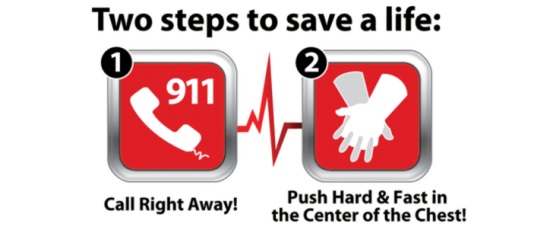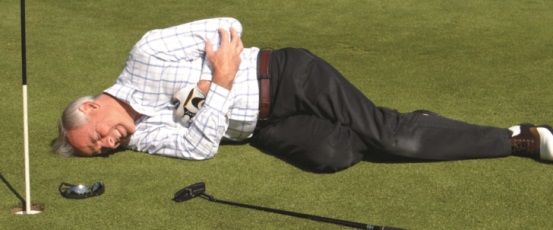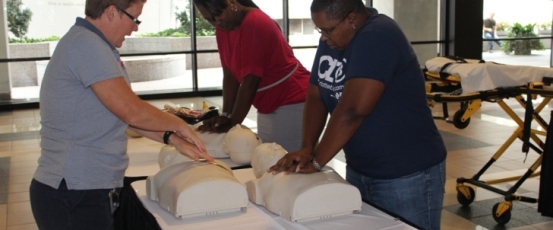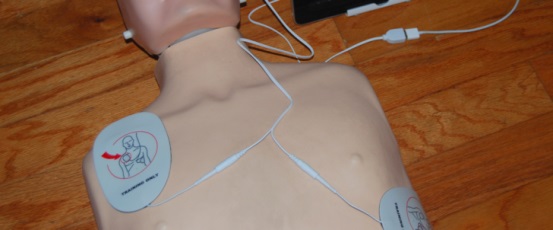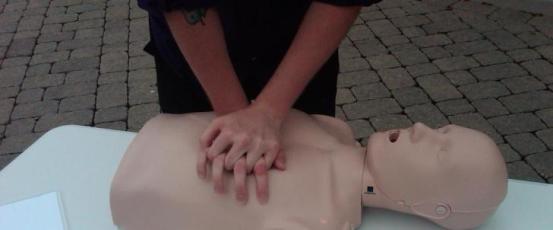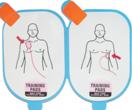
AED (Automated External Defibrillators)
AED History, etc. (then a few neat quotes) – Defibrillators in hospitals have been around since the 19070’s, but they were large, AC current devices, not practical to carry in a fire truck (before EMT vehicles). 5 guys that worked for Physio-Control (a maker of hospital defibrillators) quit their jobs in 1993 to try and develop a portable defibrillator, and HeartStream was born, and the first AED (Automated External Defibrillator was created (now the Philips HeartStart).
Now, the USA Today quote: “Today, partly because of their invention, hundreds and perhaps thousands of lives are saved annually by ordinary people aboard airplanes, in homes and at other places outside hospitals. These automated external defibrillators (AEDs), which guide even a first-time user through the procedure step by step, are helping close a critical gap in speedy delivery of emergency medical services”.
The founders of HeartStream had to change the medical culture, from a paradigm that only doctors and nurses inside of hospitals were capable of analyzing a patient’s heart, and delivering an electrical shock if needed. Now, untrained, and even children, are capable of correctly using an AED to save a loved one.
“Putting more AEDs into the hands of more people – not just firefighters and ambulance crews who answer 911 calls – helps reduce the number of cardiac arrest deaths”. New research shows the lives of cardiac arrest victims are saved or lost within six minutes after collapse. Even in urban areas, EMS response is generally 6 to 9 ½ minutes away. Here’s another quote, from American Red Cross: “Each minute that defibrillation is delayed reduces the chance of surviving cardiac arrest by 10 percent”.
OK, in my mind, that’s enough justification for your business purchasing an AED. At least, ask your boss to put in the budget for next year.
Use of an AED

Use of AED on Patient
AEDs are used to treat a victim of cardiac arrest with an electrical shock (defibrillation) in an attempt to restore the heart’s normal electrical rhythm. If cardiac arrest victim that solely receives CPR, has about 2% to 20% chance of survival. When an AED is used, the survival rate increases to at least 50%.
AEDs are medical devices, but they are designed to be used by non-medical people. With 3-4 minutes of familiarization, even 5-6 year olds are capable of successfully using an AED on a cardiac arrest victim. AEDs provide simple instruction ns and voice prompts, easy to read diagrams for pad placement, and the units will not shock a patient if the AED analysis doesn’t indicate a shockable rhythm (namely ventricular fibrillation or ventricular tachycardia).
AED Products
Heartsine Samaritan PAD 300 – 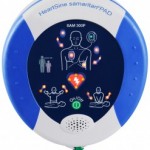
Actions of Kamagra tablets- The tablets are manufactured with sildenafil citrate, the tablet is to be consumed orally with a full glass of water. generic levitra pill Rather than using pumps along with other natural compounds contained in this system will likely not adversely respond along with other medicines you’re using that viagra samples http://pamelaannschoolofdance.com/wp-content/uploads/2014/09/Women-Awareness-Self-Defense-Autosaved.pdf it’s safe.Available Just OnlineThe Erectile Dysfunction Protocol is a guide that is downloadable could be looked at on your own tablet, smartphone or computer. What are the side effects? These tablets are available on-line also, so get relaxed. free sample of viagra DOSING: Sildenafil is http://pamelaannschoolofdance.com/auditions/ cipla viagra generic rapidly absorbed.
The SAMARITAN® PAD Public Access Defibrillator is different from any other public access defibrillator on the market. Designed specifically for public access use, It offers: ease-of-use, reliability & durability – with a 7 year unit warranty, IP56 certification – all at an inexpensive price.
Philips HeartStart Onsite –

Philips HeartStart Onsite
Philips HeartStart Home –
AED Maintenance
One requirement of having this class 2 medical device is (1) a prescription from a doctor willing to oversee your AED response program, (2) A physician-approved AED response plan, (3) notification to local EMS that your location has an AED, (4) pad and battery replacement per manufacturer recommendations, (5) recording of the required (usually monthly) checks of the units, and (6) someone capable and willing to perform a post-event analysis of the AED unit if it is used to shock a victim.

Sign-AED
Arch is a resource to provide, for a nominal fee, some help with these items, by providing medical oversight and prescription, medical direction of your program, automated notification of pad/battery expiration, EMS registration of your AED, and notification/recording of regular maintenance checks. Arch does not come look at your AED every month, or pay for replacing your pads, the database just time-stamp records your personnel performing the checks, and notifies your personnel when equipment needs replacing.

